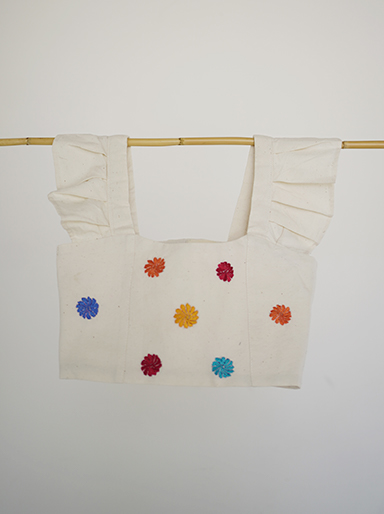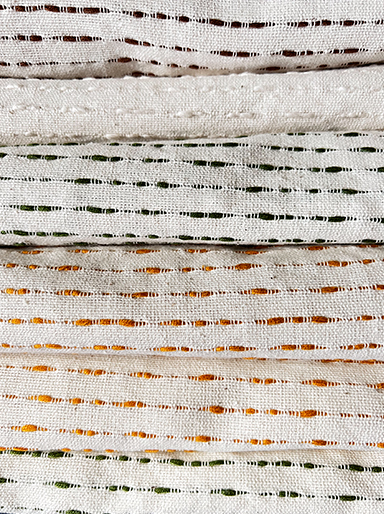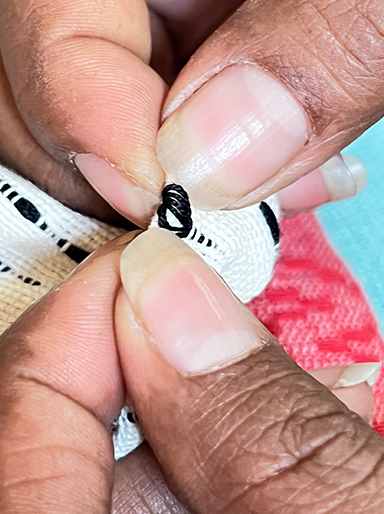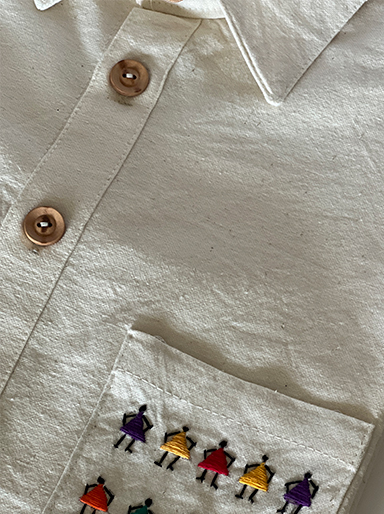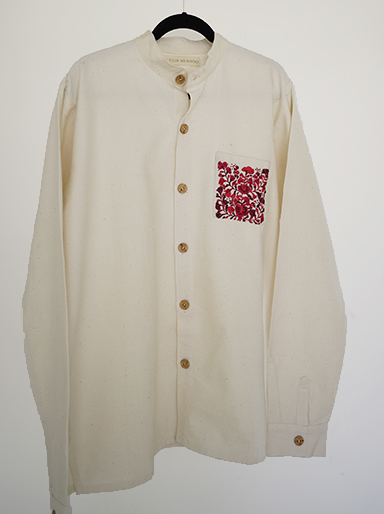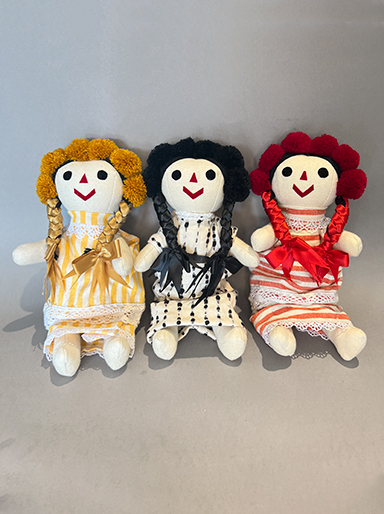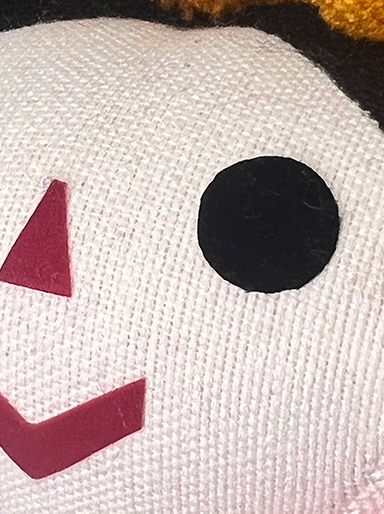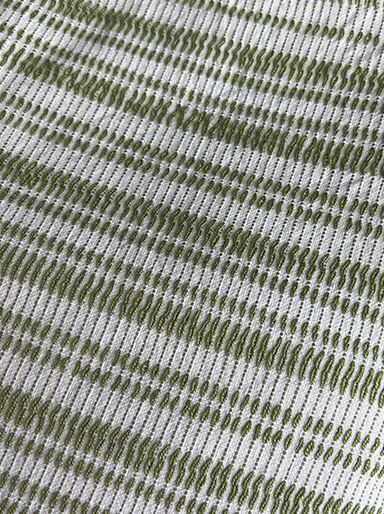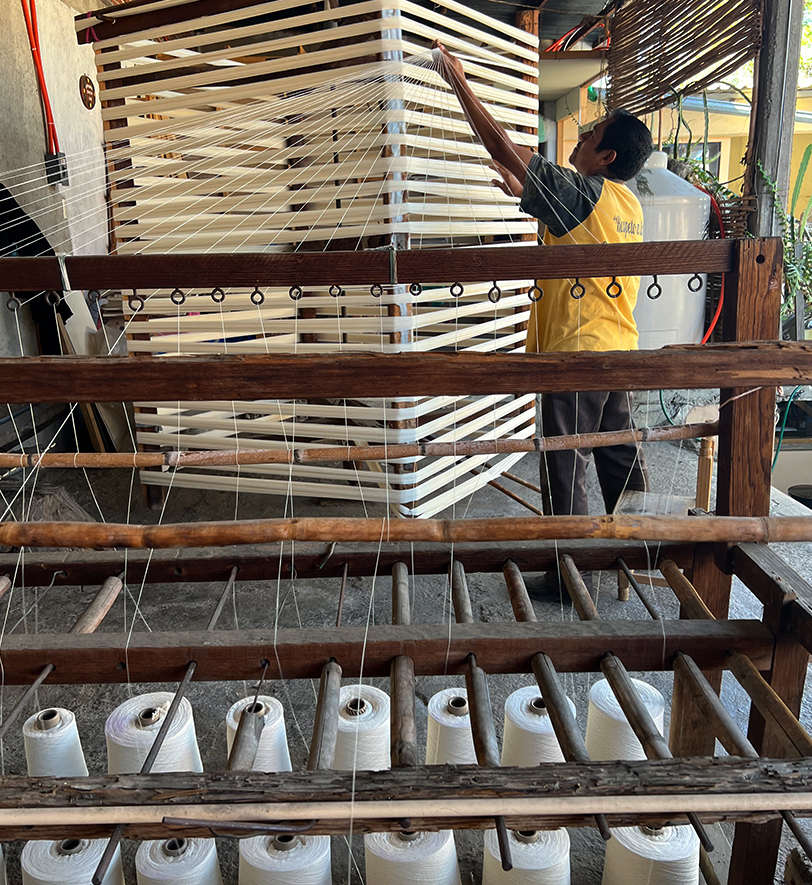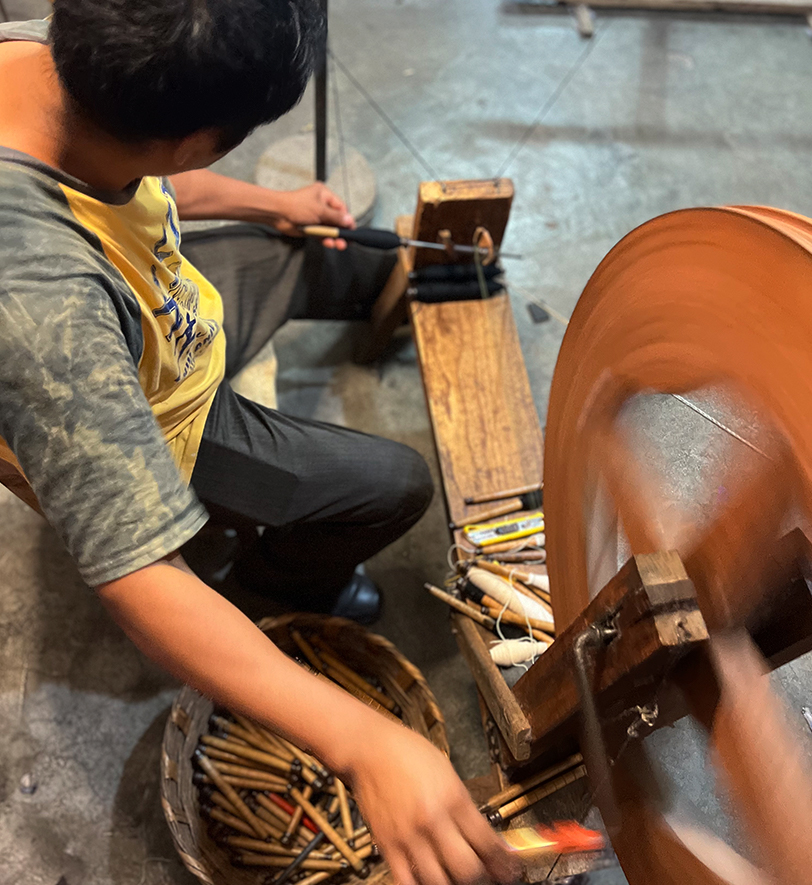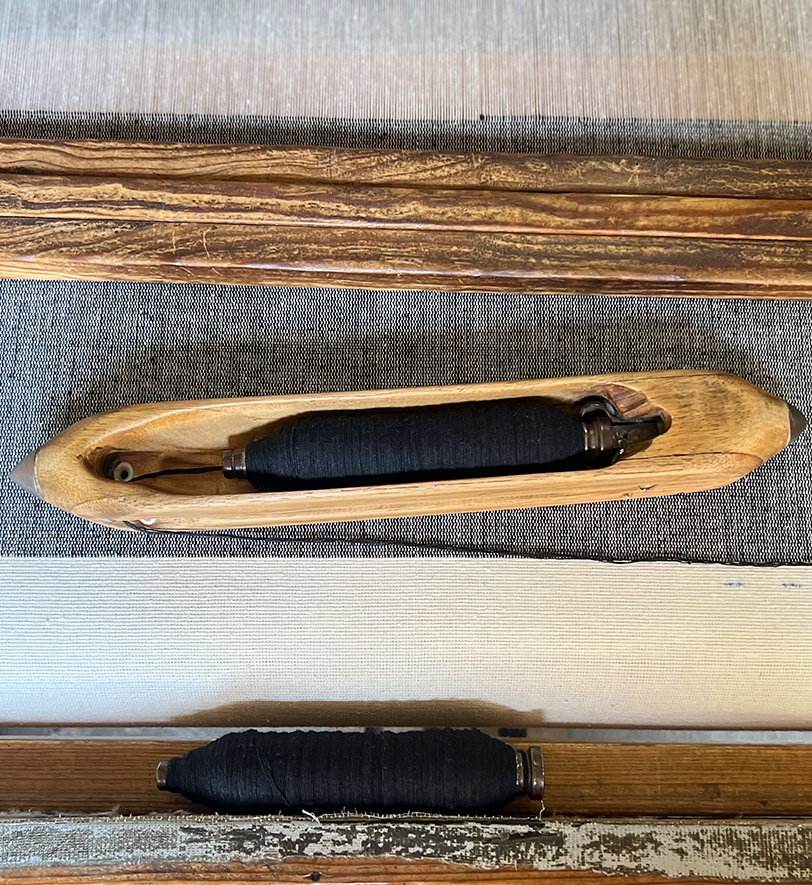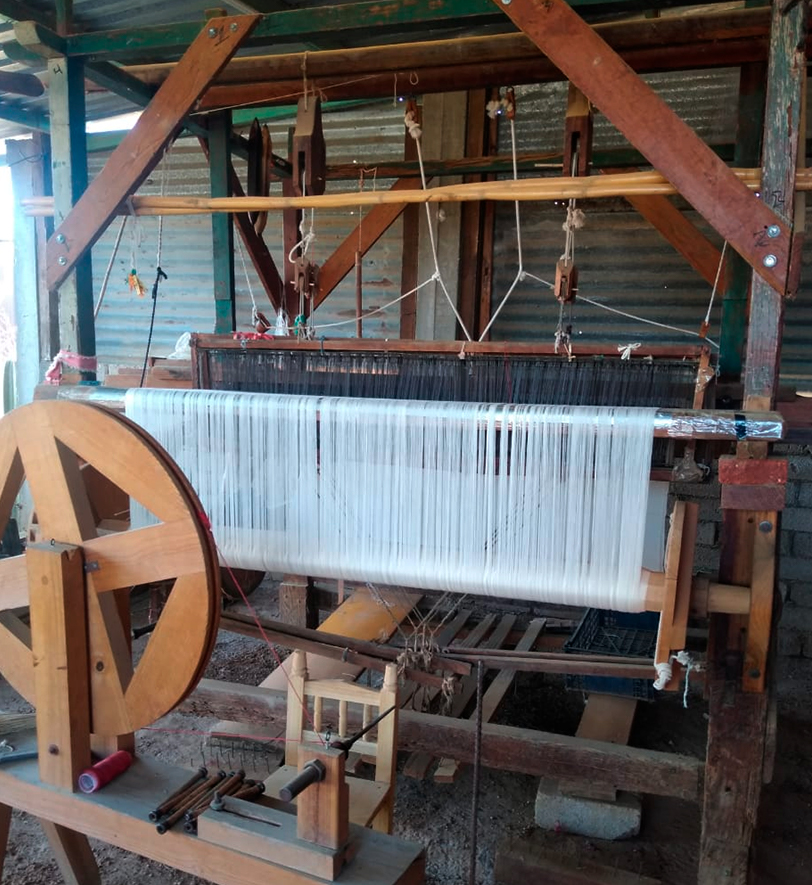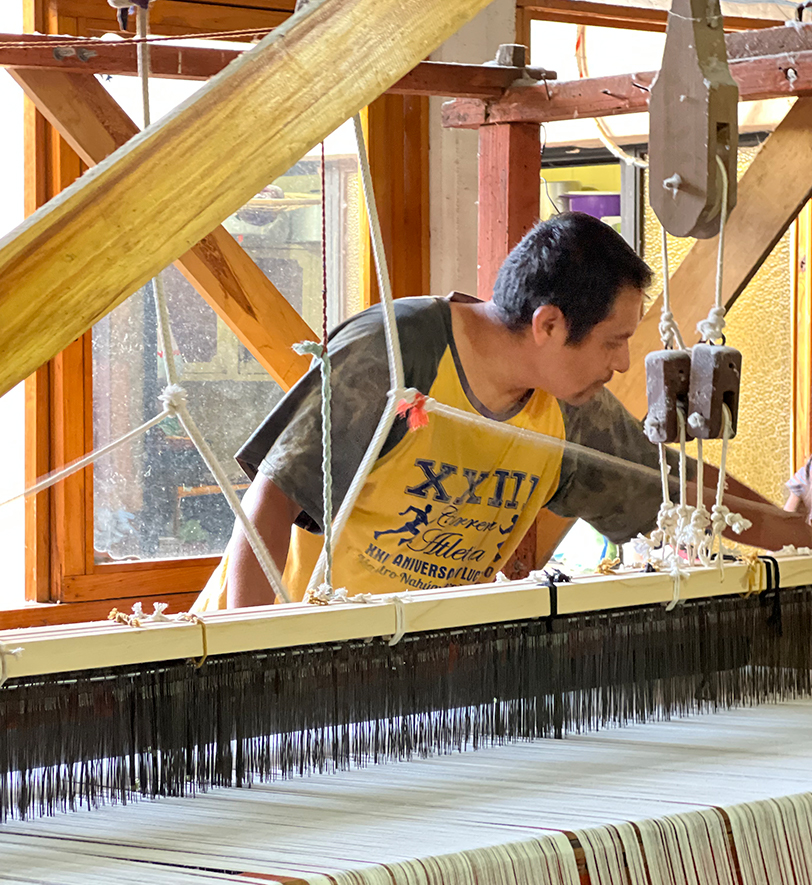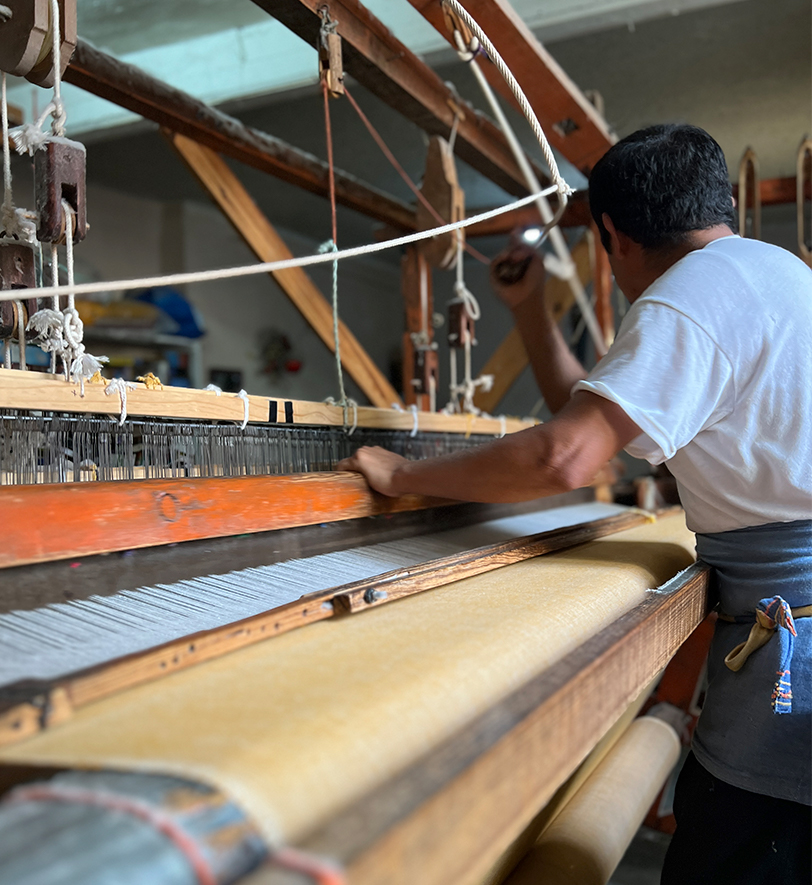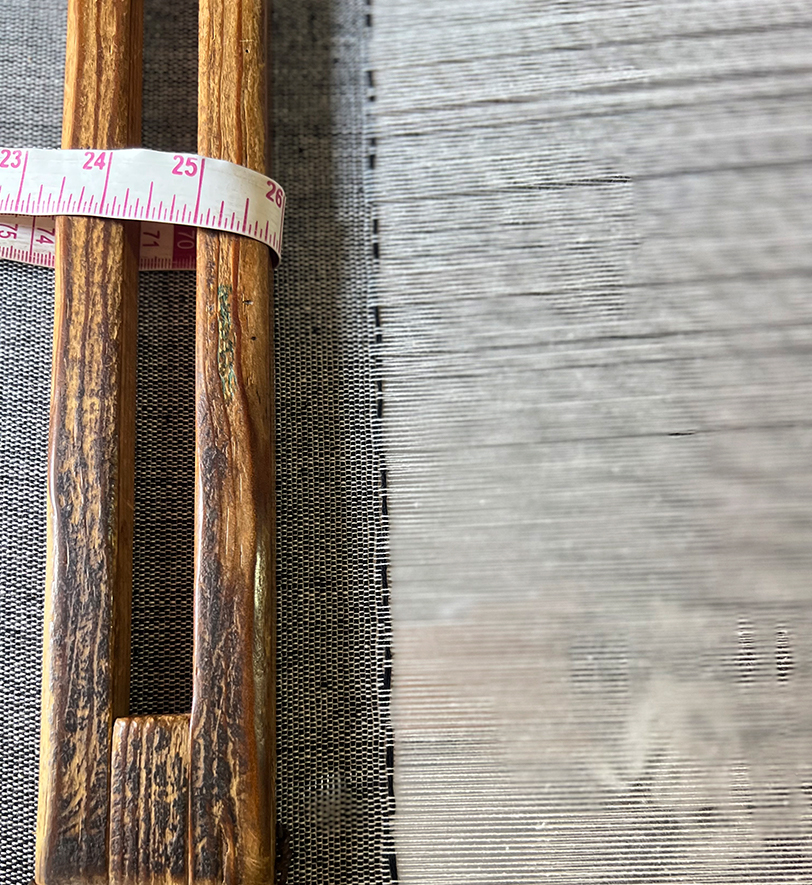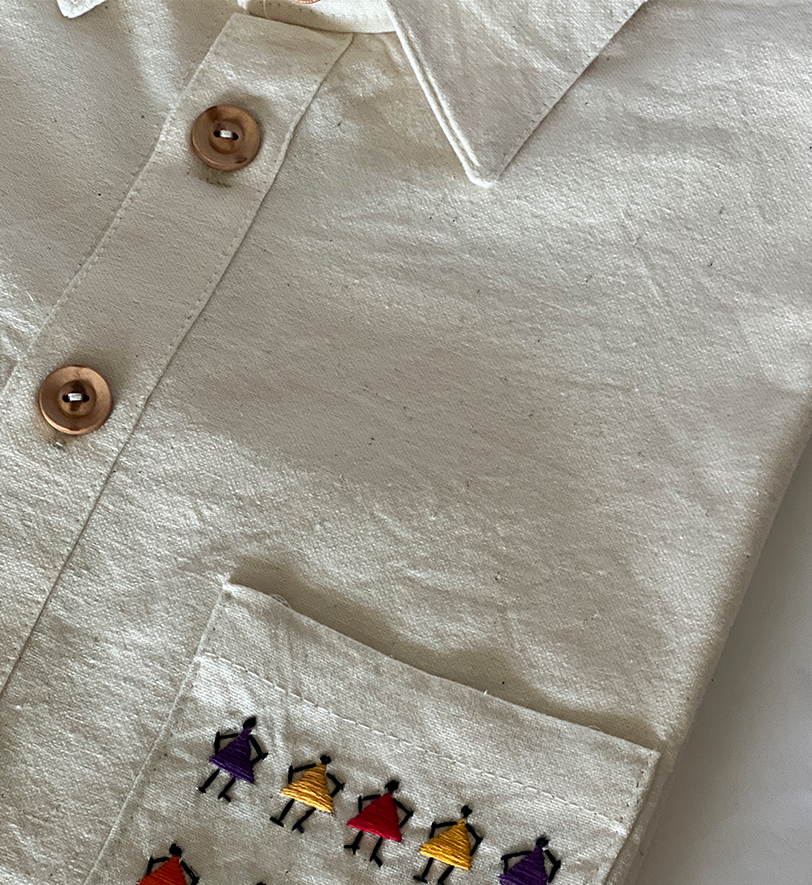History
The treadle loom technique is assumed to have been developed in China, evolving in Europe by the 11th century, and was introduced in Mexico in the 16th century during the Spanish colonization.
Process
Threading
With the help of a spinning wheel, small skeins are created with the variety of colors that will be used in the brocade.
Skein
By spinning the yarn on a square platform, the yarns are arranged and form the skein.
Loom preparation
Tying the threads, one by one (about 3,000 to 4,000 threads). The structure of the looms is made of wood and they are so resistant that they have been passed from generation to generation, they can have up to 100 years of use.
Ideation
The focus is on the way the yarns are interwoven to create different textures and patterns.
Weave
By moving the feet and hands simultaneously, figures and patterns are formed. The movement simulates a choreography characterized by an unparalleled rhythm and coordination obtained by years of experience and passion for the craft of weaving. In this process, the threads intertwine to form the canvas.
Dressmaking
Due to the variety of sizes, colors, patterns and designs, the use of these looms is very wide.
Characterized by its continuous innovation in the textures and patterns that are woven into each canvas, accompanied by the highest quality cotton yarns.

